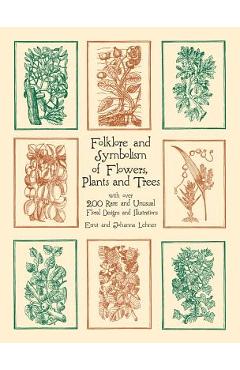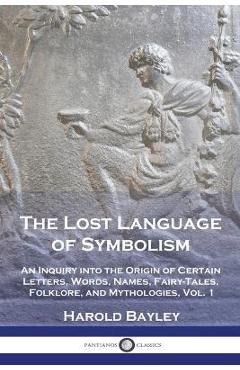Folklore and Symbolism of Flowers, Plants and Trees - Ernst Lehner

Detalii Folklore and Symbolism of Flowers,
Folklore and Symbolism of Flowers, - Disponibil la libris.ro
Pe YEO găsești Folklore and Symbolism of Flowers, de la Ernst Lehner, în categoria Art.
Indiferent de nevoile tale, Folklore and Symbolism of Flowers, Plants and Trees - Ernst Lehner din categoria Art îți poate aduce un echilibru perfect între calitate și preț, cu avantaje practice și moderne.
Preț: 95.9 Lei
Caracteristicile produsului Folklore and Symbolism of Flowers,
Comandă Folklore and Symbolism of Flowers, Online, Simplu și Rapid
Prin intermediul platformei YEO, poți comanda Folklore and Symbolism of Flowers, de la libris.ro rapid și în siguranță. Bucură-te de o experiență de cumpărături online optimizată și descoperă cele mai bune oferte actualizate constant.
Descriere magazin:
Folklore and Symbolism of Flowers, Plants & Trees by Ernst & Johanna Lehner explores the cultural significance and legends surrounding much of the natural world. Ernst Lehner (b. 1896, d. 1971) and wife Johanna were Austrian natives who emigrated to the United States in 1940, likely fleeing the Nazis. After settling in New York City, the couple embarked on a literary and illustrative pursuit, writing numerous books together that examined the world of symbolism and legend. These works include Astrology and Astronomy (1964), A Fantastic Bestiary: Beasts and Monsters in Myth and Folklore (1969), Devils, Demons and Witchcraft: 244 Illustrations for Artists and Craftspeople (1971), and Folklore and Odysseys of Food and Medicinal Plants (1973). Folklore and Symbolism of Flowers, Plants & Trees (1960) turns this interest in iconography and mythology to the mysteries of growing things. Throughout human history, they write in the introduction, flowers, plants and trees became so interwoven with man\'s daily life that they developed into symbols for his expressions and sentiments, his passions and affectations, his beliefs and religions, his fears and superstitions. Broken into five sections, this fully-illustrated work explains the meaning behind real plants and flowers, as well as those that are now considered legend. Beginning with Sacred Plants, the Lehners describe the legends surrounding real plants, such as the acacia used to build the Arc of the Covenant, and the bo tree, under which the Buddha sat until reaching Nirvana. Other trees are strictly representative, such as the Tree of Life which is seen in nearly all cultures and religions. In Flower Lore and Legend, stories from Greek and Roman mythology and European cultures attempt to make sense of the seasonality of flowers, their healing properties, where certain species grow, and how they inspired the greater world-all in an attempt to explain the unexplainable. The acanthus, for example, is said to be the inspiration for the famous Corinthian column. The Greek legend says that a young girl of Corinth fell ill and died. Her nurse collected her ornaments and trinkets in a basket and placed the basket on the tomb above the roots of an acanthus plant. She placed a flat tile on top to prevent rain from getting in. When the acanthus sent forth its stalks and leaves in spring, they spread over the basket and bent back down beneath the tile. A sculptor and architect passed by and was s

Produse asemănătoare

Folklore and Symbolism of Flowers, Plants and Trees - Ernst Lehner
![]() libris.ro
libris.ro
Actualizat in 28/10/2025
100.16 Lei

Folklore and Symbolism of Flowers, Plants and Trees - Ernst Lehner
![]() libris.ro
libris.ro
Actualizat in 28/10/2025
185.92 Lei
Produse marca Ernst Lehner

Folklore and Symbolism of Flowers, Plants and Trees - Ernst Lehner
![]() libris.ro
libris.ro
Actualizat in 28/10/2025
100.16 Lei

Folklore and Symbolism of Flowers, Plants and Trees - Ernst Lehner
![]() libris.ro
libris.ro
Actualizat in 28/10/2025
185.92 Lei

Folklore and Symbolism of Flowers, Plants and Trees - Ernst Lehner
![]() libris.ro
libris.ro
Actualizat in 11/04/2024
95.9 Lei

